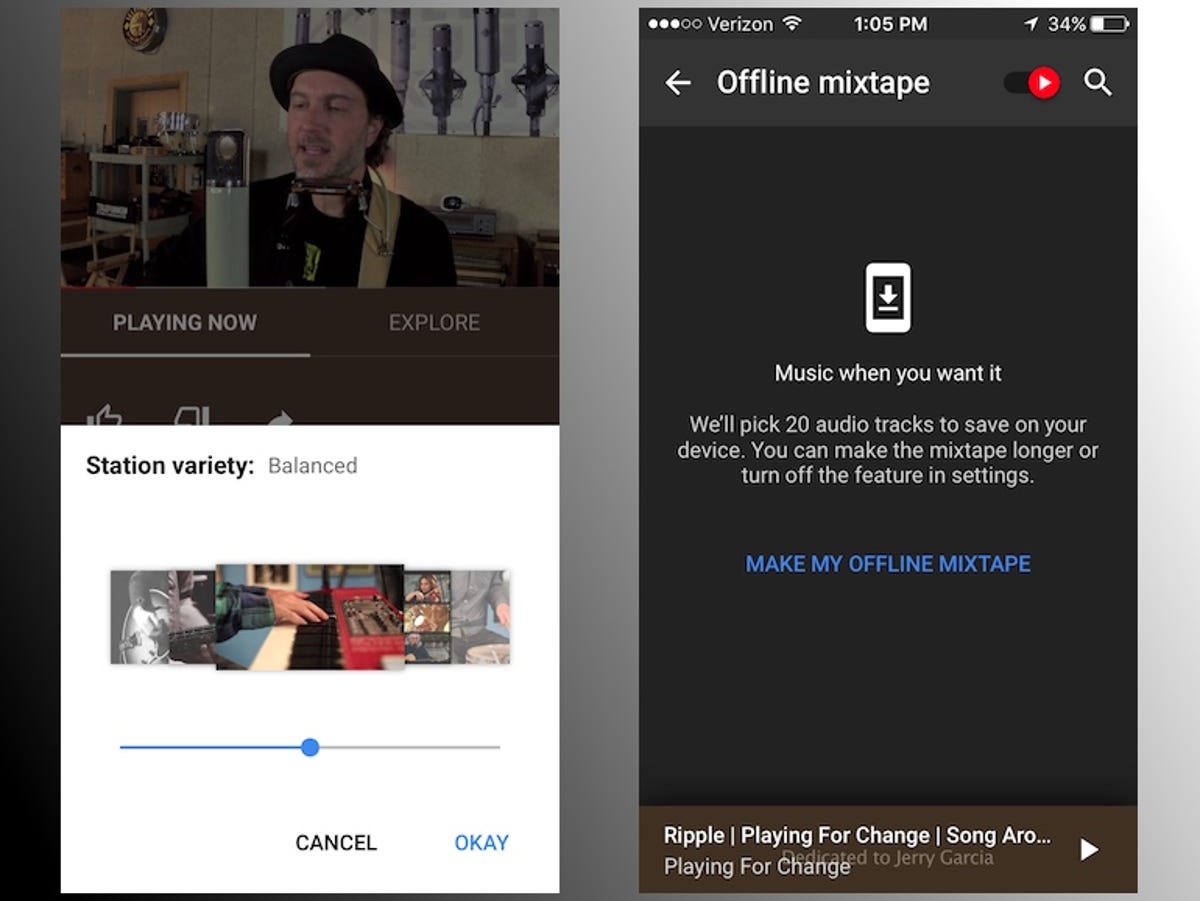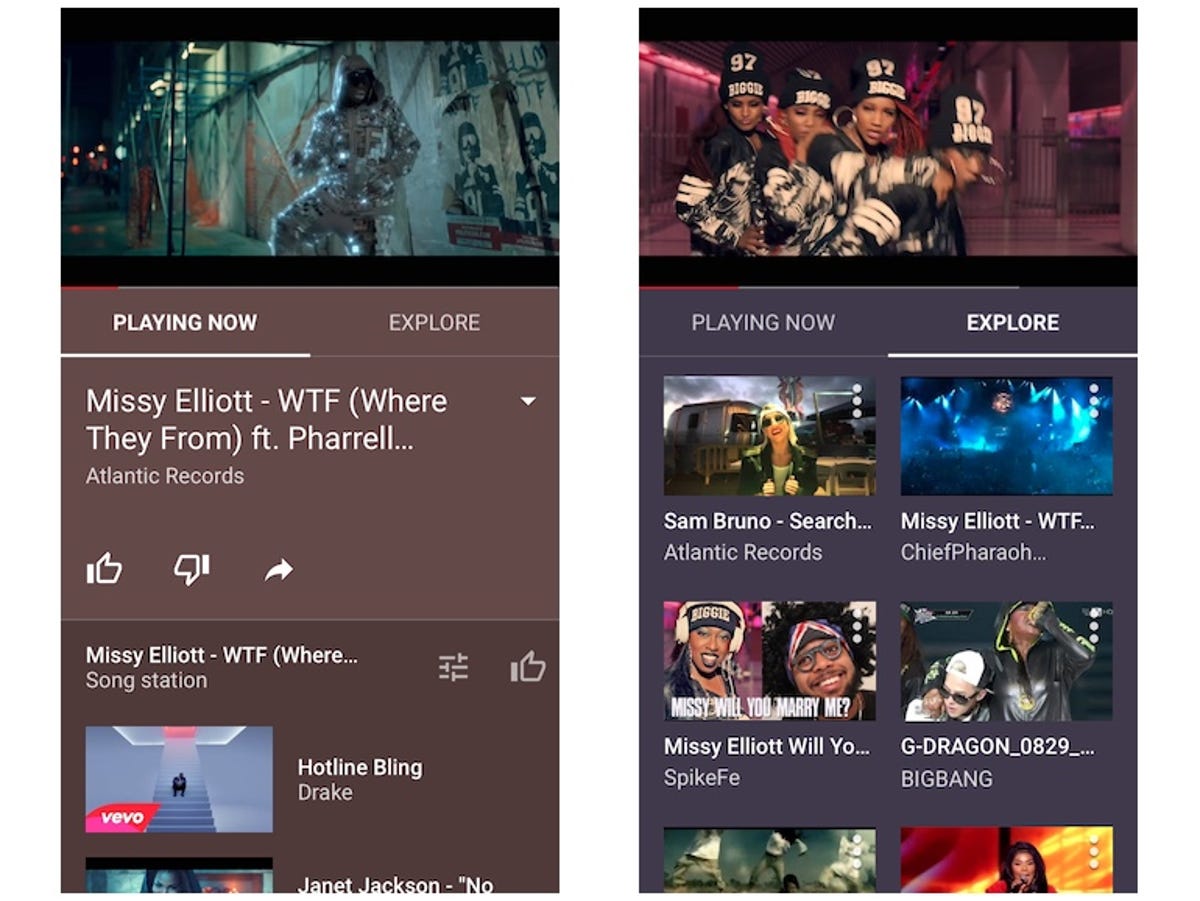YouTube over the years has become an impressively large music repository, a development that the YouTube mobile app never fully grasped. The mobile YouTube app is geared for YouTube’s raison d’etre of watching videos, which is why the separate YouTube Music app is needed.
The YouTube Music app is free for iPhone and for Android, but a YouTube Red subscription will get rid of ads and delivers premium features such as the ability to play music offline or in the background while using other apps or with your screen off — things the YouTube mobile app can’t do. It also provides an audio-only mode that plays music without playing videos.
When you first launch YouTube Music, you will need to log into your Google account and opt in for the 14-day free trial of YouTube Red, which you and then extend another month in YouTube Music’s settings.
I tried YouTube Music for the iPhone (there is no iPad version of the app) and found it to reside somewhere between Apple Music and Spotify on one end and Pandora on the other. Like Apple Music and Spotify, I can play any song I can find via search. Like Pandora, I can pick a song and then kick back listen to a playlist the app creates based on that song. You must reply on these auto-generated playlists; YouTube Music does not let you create your own playlists or even queue up a song to play next. Then again, with YouTube’s wide mix of official releases, live recordings and covers and originals by relatively unknown artists, YouTube Music has its own unique feel.
 Enlarge Image
Enlarge ImageScreenshot by Matt Elliott/CNET
The main screen of YouTube Music provides three tabbed views. The home tab shows thumbnails of the songs you recently plays along with recommendations. The flame tab displays a feed of what’s trending on YouTube and new releases, including a Top 40-esque playlist called The Daily 40. And the thumbs-up tab lets you see the songs you have liked.
Above the tabs are three buttons. The hamburger button in the upper-left corner takes you to settings and lets you switch accounts, see your recently played songs and create an offline mixtape. The toggle switch lets you move in and out of audio-only mode. And in the upper-right corner is a search button that provides a music-specific search by song, artist or album.
Back to the offline mixtape. It downloads a number of songs based on your listening history or, failing that, what’s popular on YouTube. You can specify the storage limit for your mixtape in settings.

 Enlarge Image
Enlarge ImageScreenshot by Matt Elliott/CNET
When you are listening to a song, you’ll see the video playing in a box in the top half of your screen. Rotate your screen to landscape to view in fullscreen. When in portrait mode, you’ll see Playing Now and Explore tabs. Playing Now shows information about the video and shows the next five songs in the playlist YouTube Music generated, which it calls a station.
Also on the Now Playing tab, you’ll find like and dislike buttons for the video currently playing along with a like button just below those for the station the app created. Next to the like button for the station is a slider-controls button that provides a slider to adjust the station variety, from less variety to balanced to more variety. If you are listening to a playlist from the trending tab, the station variety slider button is replaced by a shuffle button.
On the Explore tab, you can browse related songs and other versions of the song if there are any.

 Enlarge Image
Enlarge ImageScreenshot by Matt Elliott/CNET
You can swipe down on the video playing to push the video into a narrow bar at the bottom of your screen to continue browsing or searching as you listen to the the song. What’s cool is a slice of the video continues to play in the narrow bar. Be careful, though: if you tap on another song or playlist, your current song will immediately stop and the new one will begin. I’m OK with not being able to create playlists with a specific order of songs, but I would argue strongly for the addition of a Play Next button that would at least let me slip in a song to the top of my auto-generated playlist.
What do you think of YouTube Music? Will you use it? Will you use it past the free trial? Do you envision it replacing Apple Music, Spotify, Pandora or your go-to music app? Let me know in the comments below.




